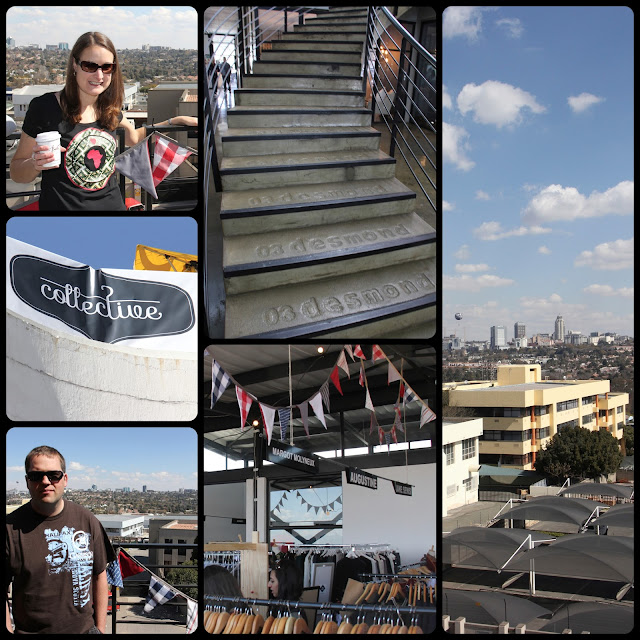A quick google search proves that there is much contraversy over which of the earth's canyons is the largest. There is extensive debate over whether length, depth or volume make it the "largest", and which parts of the canyon are included (as some have adjacent mountain ranges and rivers that may or may not be included in the measurements). On top of that, there are some canyons that have still yet to be fully discovered and researched, but that are known to likely compete with the current list.
Putting all of this aside, the Blyde River Canyon is the third largest in the world according to Lonely Planet. They know their stuff, right?
Largest or not, I have heard great things about this particular canyon, which sits in the province of Mpumalanga, and is about a 5 hour drive east from Johannesburg. Those facts made it our destination of choice for the August long weekend.
There does seem to be consensus on google that it is one of the only canyons in the world covered in dense foliage, which means that the canyon is green and lush rather than dusty and barren. And it is stunning.
I should note that for the first time since we've been in S.A., we got rained out. After an incredible first day of hiking and sightseeing around the canyon and the various viewpoints, we made it back to the car just in time to escape an intense hail storm. Following the storm on the second day of our trip everything was completely covered in clouds, rain and mist, and I could barely see two feet in front of me, let alone a canyon. And so, we settled for exploring the towns neighbouring the canyon instead, and returned to the canyon on the third (and last) day of our trip.
I'll let the photos (and my riveting commentary, of course) do the rest of the work sharing our adventures of the breathtaking Blyde River Canyon (photos courtesy of G, M, C, my gorilla tripod and myself).
Scenic viewpoint from the south-eastern edge of the canyon.
Hiking the Leopard, Guina-Fowl and Lourie trails around the Canyon and through the surrounding forest (and stopping for a couple of quick swims along the way!)
One of my favourite views; I would have been happy sitting here for hours just staring. It was surreal.
The rainbow after the storm (and the panoramic picture that pretty much convinced me there is no need for an SLR when you have an iPhone).
Picking up some naartjie (oranges) and avos from the lovely Aubrey at his roadside shop (even at the finale of a wicked hail storm which turned the ground in front of his shop into a river, Aubrey was there smiling and ready).
Pilgrim's Rest: In 1873 a man named Alec Patterson found gold in the stream that flowed through the valley, and the news spread like wildfire, creating one of the biggest gold rushes of the time. Gold Mining continued in this picturesque place until 1972, and now the entire town serves as a sort of gold-rush museum as most of the buildings have been left unchanged for more than a century. While the historic appeal brings with it hawkers, souvenir stalls, and overall tourist traps, it was a mildly-entertaining little village to explore on a foggy and rainy Saturday morning.
Waterfalls: The area around the canyon is renowned for having a plethora of gorgeous and unique waterfalls. Some of the ones we visited included: Lisbon Falls (92m), Berlin Falls (45m), and Mac Mac Falls (65m). Mac Mac is actually a national monument as it was once a single stream, but gold miners blasted it with dynamite to divert the river in an attempt to pan the reef that the river plunges over (top left photo).
The Pinnacle: A quartzite free-standing buttress rising 30m up from the forest below.
Bourke's Luck potholes: This sight marks the beginning of the Blyde River Canyon. The rock features were created over thousands of years of the Treur River colliding with the Blyde River causing sand and rock to grind these huge, cylindric potholes into the rock at the bed of the river. Apparently the potholes were named after gold digger Tom Bourke, who staked claim nearby, and while he himself was not successful, he correctly predicted there were large deposits of gold to be found in the area.
The Three Rondawels: "Rondawel" is an Afrikaans word meaning a round hut-like dwelling. These three giant peaks of quartzite and shale have sheer rock walls with grass ("thatched") roofs, and tower more than 700m from the base of the canyon. Legend has it that the Three Rondawels were named after the three most troublesome wives of Chief Maripi Mashile- named Magabolle, Mogoladikwe and Maseroto (left to right).

God's Window and Wonder View: known for their spectacular views over the Lowveld 900m below and with views of Kruger National Park and Mozambique off in the distance. Wonder View is located at an altitude of 1,730m, and is the highest point in the area. It's key to have a clear day to get the most out of both of these viewing points, however having weathered the first storm of the season the day before, the viewpoint was completely covered in mist in the morning and looked like someone had turned on the smoke machine (bottom left photo). It did clear up to a mild haze later in the afternoon (middle left photo).
We chose to stay in an adorable "birdhouse" at Valley View Backpackers in the town of Graskop while exploring the canyon; this quaint town lies about 40km from the canyon.
It wouldn't be a complete dipiction of the weekend if I didn't include shots of us refuelling (we went to Harrie's, the local pancake spot, multiple times in our three days...) and playing Settlers. An outdoorsy weekend is not complete without Settlers and at least a few rounds of cards.

























